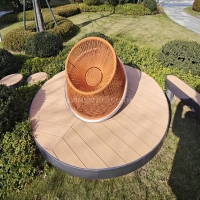Welcome to the website for landscape facilities products and knowledge.
What are the dimensions of the bin, and how do they accommodate different installation environments?
When selecting a bin for industrial or commercial use, understanding its dimensions is crucial to ensure it fits seamlessly into the intended space. Standard bin dimensions vary depending on the type and purpose, but most are designed with flexibility in mind to accommodate diverse installation environments.
Bins typically come in a range of sizes, from compact units for tight spaces to larger models for high-capacity storage. The height, width, and depth are carefully engineered to maximize storage efficiency while allowing easy access. For example, shallow bins are ideal for areas with limited depth, while taller bins optimize vertical space in warehouses.
Installation environments often dictate the ideal bin dimensions. In confined spaces, such as under workbenches or in narrow aisles, smaller or modular bins are preferred. For open areas like manufacturing floors, larger bins with reinforced structures are more suitable. Additionally, bins with adjustable dividers or stackable designs further enhance adaptability, allowing customization based on specific needs.
Material and weight capacity also play a role in dimension selection. Heavy-duty bins may have thicker walls, slightly reducing internal space but increasing durability. Lightweight bins, on the other hand, prioritize volume and are easier to relocate.
Ultimately, the right bin dimensions depend on the installation environment’s spatial constraints, storage requirements, and workflow efficiency. By carefully evaluating these factors, businesses can choose bins that not only fit but also enhance their operational setup.
Related search:

Recommendation
Swivel chair-Specialty steel structure woven rattan leisure chair with rotatable design